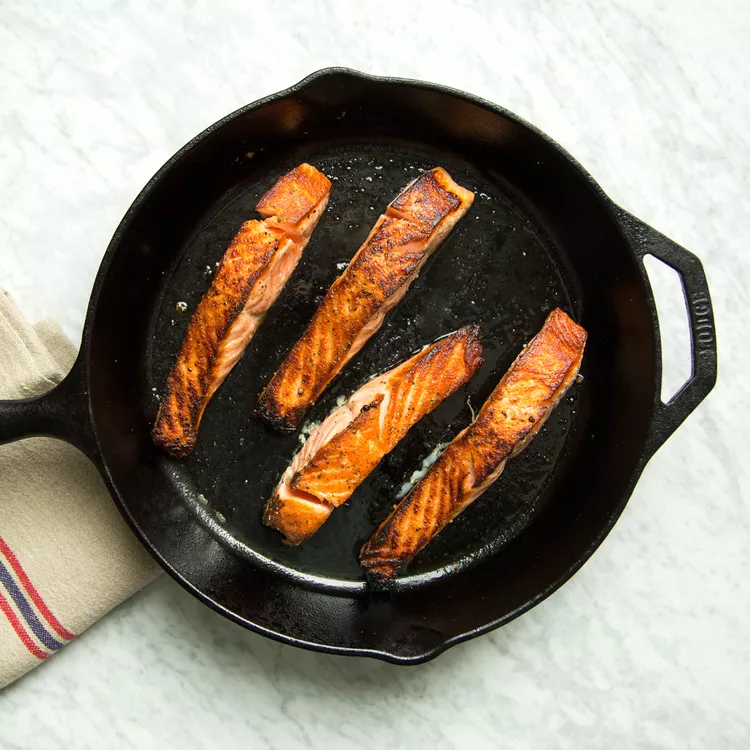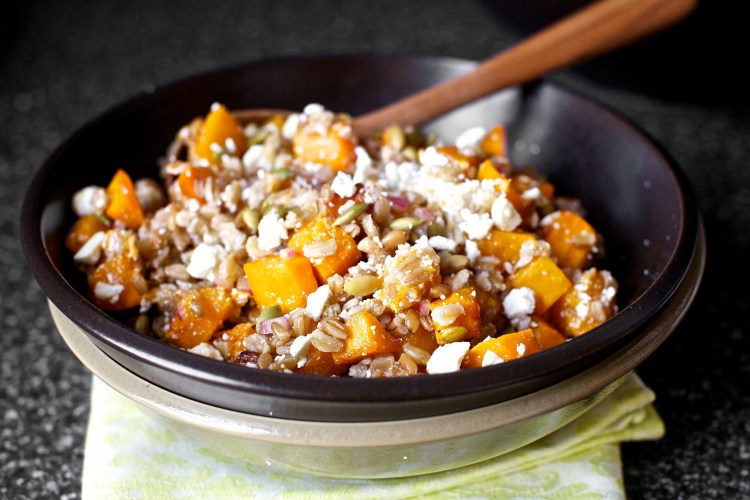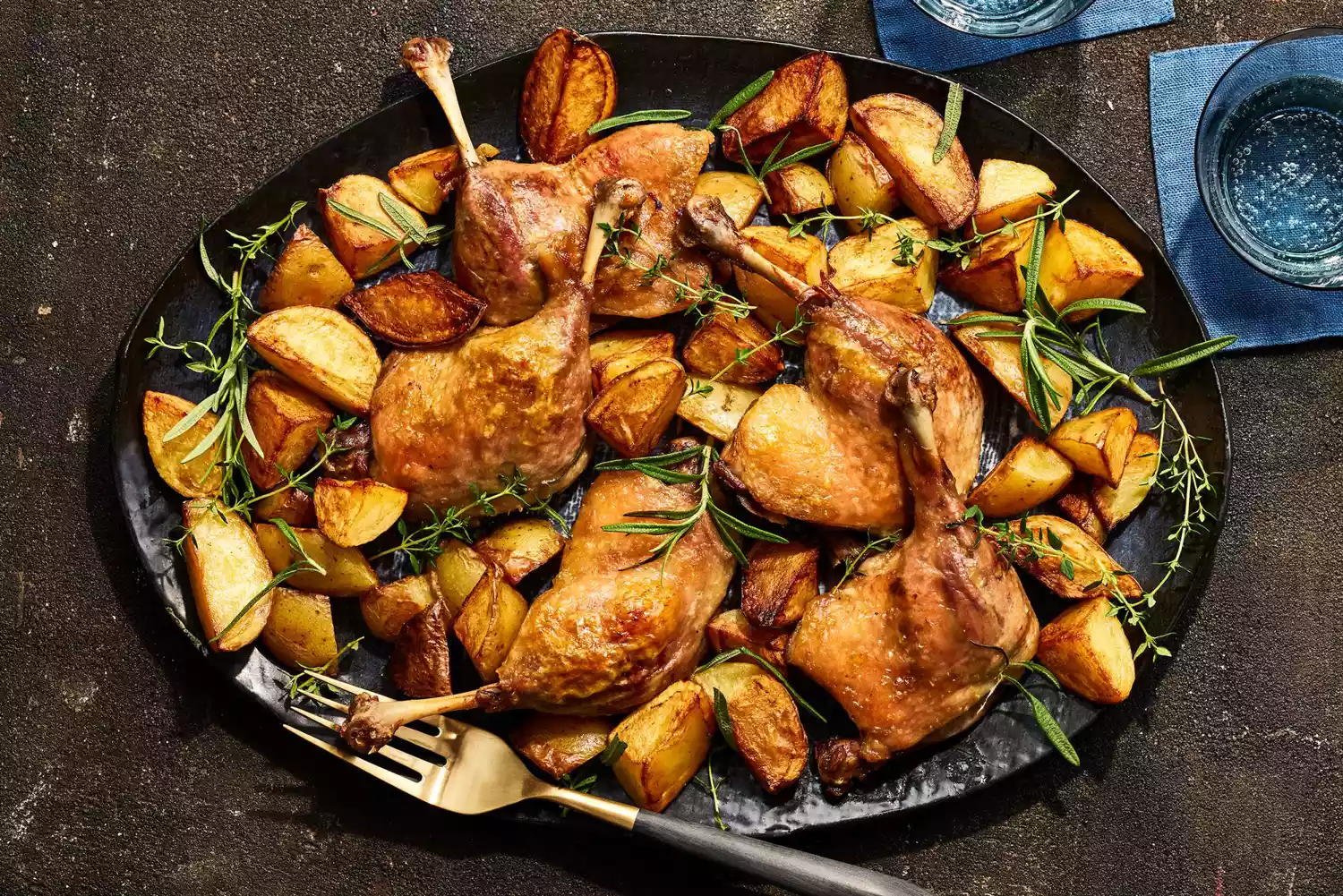Advertisement
Tender Salmon Fillet with a Golden-Crisp Crust

The Art of the Perfect Pan-Seared Salmon
Mastering the perfect pan-seared salmon is a fundamental skill that yields restaurant-quality results in your own kitchen. This guide will walk you through not just the steps, but the science and techniques behind achieving a crisp, golden crust and a tender, moist interior every time. The entire process, from pan to plate, takes just 10-12 minutes.
The Foundation: Selecting Your Ingredients
The simplicity of this dish demands high-quality components. Your choices here directly impact the final result.
- The Salmon (4 center-cut fillets, 6 oz each, 1/4-inch thick): Opt for skinless, center-cut fillets of even thickness. This ensures uniform cooking. "Center-cut" is key, as tapered tail pieces will overcook long before the thicker part is done. Fresh, sustainably sourced salmon will have a bright, clean aroma and firm flesh.
- The Fat (1 teaspoon olive oil): Use a high-heat oil with a neutral profile. Extra virgin olive oil can smoke at high temperatures, so regular olive oil or avocado oil is preferable. The small amount is sufficient to create a non-stick surface in a properly heated cast-iron skillet.
- The Seasoning (3/4 tsp kosher salt, 1/4 tsp black pepper): Kosher salt is preferred by chefs for its pure, clean taste and because its larger flakes make it easier to season evenly. Freshly cracked black pepper provides a superior aroma compared to pre-ground. Season just before cooking to draw out minimal moisture.
Essential Equipment
- A well-seasoned 12-inch cast-iron skillet is ideal. It retains and distributes heat exceptionally well, creating that coveted sear.
- A sturdy, wide fish spatula—its thin, slotted edge is perfect for getting under the fillet without breaking it.
- Tongs for managing the skillet.
- An instant-read thermometer is the most reliable tool for determining doneness.
Step-by-Step Cooking Guide
Step 1: The Pre-Heating Phase
Place your dry cast-iron skillet over high heat and let it preheat for a full 3 minutes. The skillet is ready when a few droplets of water skitter and evaporate instantly upon contact. This initial, intense heat is the secret to a good sear, as it instantly caramelizes the surface of the fish.
Step 2: Adding the Oil and Salmon
Add the olive oil and swirl the pan to coat it. The oil should thin out and shimmer almost immediately; wait 30 seconds until it just begins to show a wisp of smoke. While the oil heats, pat your salmon fillets completely dry with a paper towel—this is a non-negotiable step for achieving a crust, not a steam. Season the fillets generously on both sides.
Step 3: The First Sear
Carefully place the salmon fillets in the skillet, presentation-side down (the side that will face up on the plate). You should hear a confident, immediate sizzle. This is the most critical instruction: DO NOT TOUCH THEM. Let them cook undisturbed for 4-5 minutes. Resisting the urge to move them allows a deep, golden-brown crust to form.
Step 4: Flipping and Finishing
Slide your fish spatula underneath a fillet. If it releases easily, it's ready to flip. If it sticks, give it another 30-60 seconds. Once flipped, reduce the heat to medium to gently finish cooking the other side without burning the exterior. Cook for another 3-4 minutes.
Determining Doneness
The most accurate method is using an instant-read thermometer. Insert it into the thickest part of the fillet:
- Medium (recommended): 125°F (52°C) – The salmon will be opaque but still very moist and juicy.
- Well-Done: 140°F (60°C) – The fish will be fully opaque and flake easily.
- Remove the salmon from the skillet immediately and let it rest for 1-2 minutes before serving. The residual heat will continue to cook the fish slightly.
Wine Pairing Suggestion
The rich, fatty nature of salmon is beautifully complemented by a full-bodied white wine. An oaked Chardonnay, such as Cakebread from California or Louis Jadot Puligny-Montrachet from France, offers notes of vanilla and butter that mirror the caramelized flavors in the seared crust, while its acidity cuts through the richness of the fish.


